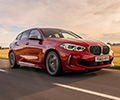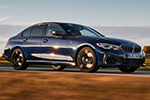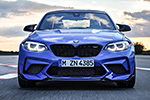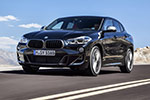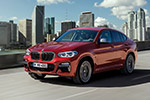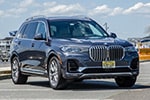Cold weather and top speeds are sworn enemies of electric vehicles. At least until the battery technology is improved. So it comes as no surprise that driving on the Autobahn with the pedal to the metal would have a huge impact on your battery level. But how much of an impact? Norwegian Youtuber Bjorn Nyland hoped behind the wheel of the BMW i4 M50 to test these assumptions. He drives the i4 M50 at its top speed – 124 mph (200 km/h) – with occasional bursts up to 142 mph (230 km/h).
Similar Efficiency as Tesla Model 3

As you can see from the video, sustaining a top speed of 140 mph (225 km/h) would result in 650 wh per kilometer, for a total range of around 94 miles (150 km). On average, based on his driving scenario, the BMW i4 netted 475 to 503 wh per kilometer. His test ended when the battery pack reached 3 percent. His conclusion was that the BMW i4 M50 was close to the efficiency of the Tesla Model 3 Performance he previously tested. The Model 3 used between 464/502 wh per kilometer with the Tesla averaging a slightly higher speed.
On paper, the BMW i4 M50 has an EPA-rated maximum range of 227 miles, with its 83.9-kWh battery, 20″ wheels, and dual electric motors. Those two electric motors combine to make a whopping 536 horsepower and 586 lb-ft and it weighs 5,086 lbs, 1,000 lbs more than a comparable Tesla Model 3 performance. Recent tests proved that the EPA rating can be overcome with some magazines achieving 268 miles per full charge.

Naturally, driving at consistent top speeds is something only achievable in Germany. And even then, it’s unlikely that an electric car driver would put his or her car through those paces. While most, if not all, modern electric cars can deliver mind blowing performance and power, it’s not advisable to push those limits, if efficiency is what you care about. Nonetheless, the BMW i4 M50 should be experienced at least once at its full capability because it is one of the most fun cars BMW makes today.
































